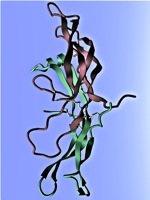Difference between revisions of "Hormones"
(Created page with 'File:lighterstill.jpgright|frame A '''hormone''' (from Greek ὁρμή - "impetus") is a chemical released by one or more cells that affects ce...') |
m (Text replacement - "http://" to "https://") |
||
| Line 1: | Line 1: | ||
[[File:lighterstill.jpg]][[File:Hormone_2.jpg|right|frame]] | [[File:lighterstill.jpg]][[File:Hormone_2.jpg|right|frame]] | ||
| − | A '''hormone''' (from Greek ὁρμή - "impetus") is a [[chemical]] released by one or more cells that affects cells in other parts of the [[organism]]. Only a small amount of hormone is required to alter cell [ | + | A '''hormone''' (from Greek ὁρμή - "impetus") is a [[chemical]] released by one or more cells that affects cells in other parts of the [[organism]]. Only a small amount of hormone is required to alter cell [https://en.wikipedia.org/wiki/Metabolism metabolism]. It is essentially a chemical messenger that transports a signal from one [[cell]] to another. All multicellular organisms produce hormones; plant hormones are also called [https://en.wikipedia.org/wiki/Phytohormone phytohormones]. Hormones in [[animal]]s are often transported in the blood. Cells respond to a hormone when they express a specific receptor for that hormone. The hormone binds to the receptor protein, resulting in the activation of a signal transduction [[mechanism]] that ultimately leads to cell type-specific responses. |
| − | [ | + | [https://en.wikipedia.org/wiki/Endocrine_system Endocrine] hormone [[molecules]] are secreted (released) directly into the bloodstream, while [https://en.wikipedia.org/wiki/Exocrine_gland exocrine hormones] (or ectohormones) are secreted directly into a duct, and from the duct they either [[flow]] into the bloodstream or they flow from cell to cell by diffusion in a [[process]] known as [https://en.wikipedia.org/wiki/Paracrine_signalling paracrine signalling].[https://en.wikipedia.org/wiki/Hormones] |
[[Category: Chemistry]] | [[Category: Chemistry]] | ||
[[Category: General Reference]] | [[Category: General Reference]] | ||
Latest revision as of 00:09, 13 December 2020
A hormone (from Greek ὁρμή - "impetus") is a chemical released by one or more cells that affects cells in other parts of the organism. Only a small amount of hormone is required to alter cell metabolism. It is essentially a chemical messenger that transports a signal from one cell to another. All multicellular organisms produce hormones; plant hormones are also called phytohormones. Hormones in animals are often transported in the blood. Cells respond to a hormone when they express a specific receptor for that hormone. The hormone binds to the receptor protein, resulting in the activation of a signal transduction mechanism that ultimately leads to cell type-specific responses.
Endocrine hormone molecules are secreted (released) directly into the bloodstream, while exocrine hormones (or ectohormones) are secreted directly into a duct, and from the duct they either flow into the bloodstream or they flow from cell to cell by diffusion in a process known as paracrine signalling.[1]
